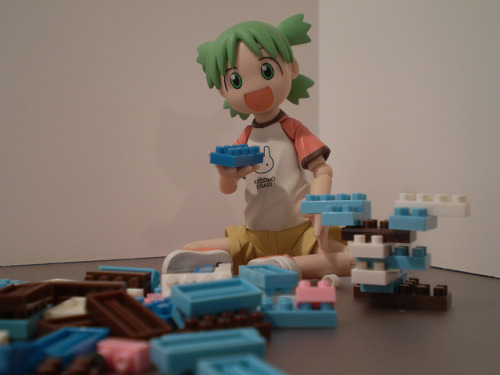You have no items in your cart. Want to get some nice things?
Go shopping
Al was in a mood. His mother could tell by the way he clenched his old binky between his front teeth, rather than out of the side of his mouth. He had toddled past her from his playroom, where his favourite blocks were scattered over the floor like landmines, and into his studio.
“Maybe his latest installment isn’t going as well as he thought,” she pondered as she cut up hot dogs and stirred the macaroni she was making for his lunch. It was his favourite, she knew; she hoped it would lift his spirits. He had just been so stressed since that disagreement with the curator at MoMa.
Some said her son was Da Vinci reincarnate, or Mozart come again as a visual artist instead of a musician, a child prodigy unlike the post-9/11 world had ever seen. Lorraine wasn’t so sure. She was a simple woman, she would readily concede, unaware of or confused by what constituted the quality of “art” or “poetry” and sometimes even other great abstracts like “beauty.” Never truth, though. She was confident she understood truth. But when the principal from Al’s preschool had called her for a meeting last spring, revealed to her that his friend from New York had seen Al’s finger-painting and called an ex-lover who happened to know a gallery owner in the Village and they wanted to do an exhibit of his work, her truth upended itself.
Lorraine’s truth was that she had a four-year-old son, Alexander, who always hated to be called Alex or any variant other than Al. To her, this sounded like a middle-aged captain of a bowling league but Lorraine’s Meemaw had always taught her to love her children for who they were. “Warts and all,” she’d say. Al liked watching Dora the Explorer and listening to Rachmaninov and had been a little odd ever since he was born on a rainy November afternoon in Tuscaloosa.
But other people’s truth about her Al had changed things. His exhibition led to the gallery’s most successful show in decades, and soon press was calling noon and night to speak to Al—who was a little man of few words—or to his mother, who was a normal-sized woman of average words, most of which usually disappointed the press. The mother of the art world’s next great titan ought to be better versed in the field, they seemed to think, and didn’t mind mentioning it in their articles.
Lorraine dipped a slotted spoon into the pasta and rinsed the noodle with cold water before tasting it. Satisfied that it was done, she finished the ritual of adding the powdered cheese, the milk, the butter. She knew Al would like a little extra hot dog, which he called Frankies, so she diced up another half and tossed it into the mix.
“Al! Lunch!” She called. No sound indicated her son had heard her. She decided to knock on his studio door.
“Al?”
With a careful twist of the knob, Lorraine opened the door to what Al called his “art house,” which was a converted garage addition the previous homeowners had made. Paints and brushes were everywhere, and she almost tripped over a canvas stretcher. Al stood in front of his latest work. He was only a third of the size of the canvas, and Lorraine couldn’t help but think of his once-tiny fingers and toes that now were big enough to grasp a brush, to dab it into cerulean and fuschia and gold with the same particular grace Meemaw had when making pie crusts. Vibrant colors ripped across the canvas, and scrawled across it in script:
Once the dirty secret of poetry
meant the dead,
meant shadowy quatrains,
meant snake oil and
disaster.
She coughed. He turned.
“Mac and frankies are up,” Lorraine said. He took her hand and they turned to go.

About Sara Button
Sara Button has farmed in Italy, taught Latin in Arizona and made hostel beds in Ireland. Now she lives & writes in Pittsburgh, PA, where she is co-editor of Hot Metal Bridge. Read more of her work here.




